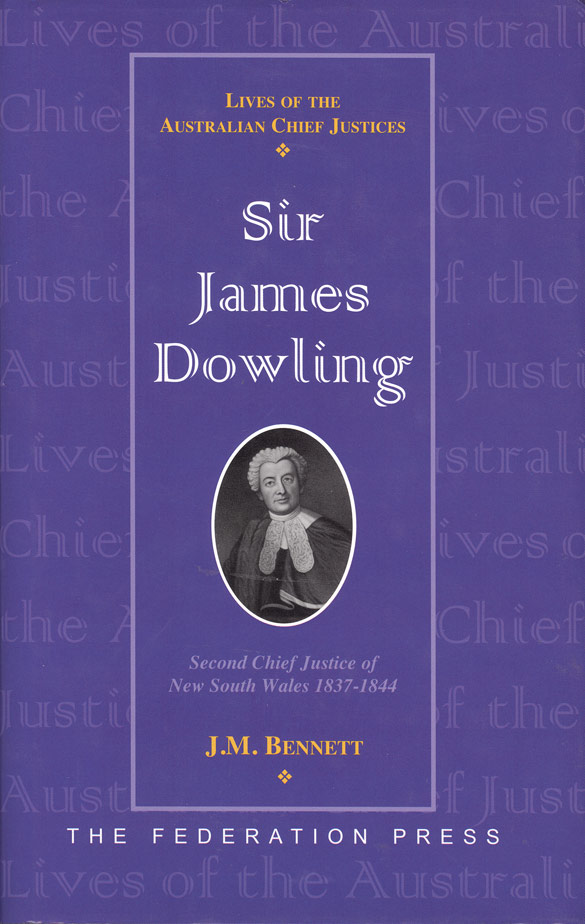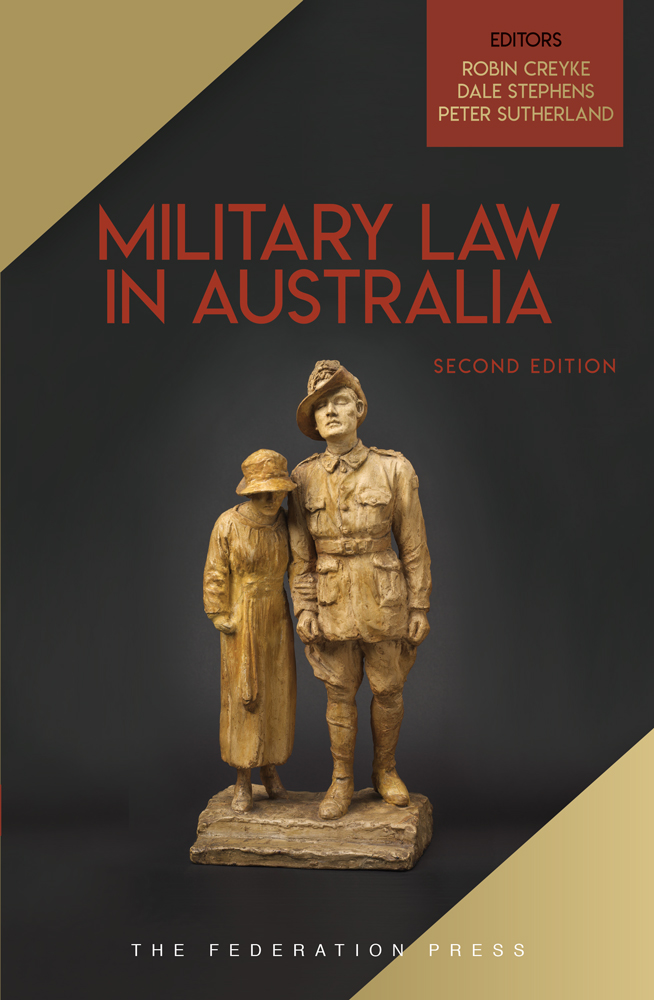The career of Sir James Dowling, second Chief Justice of NSW (1837-1844), supplies a model of the working of patronage in the appointment of judges to British colonial service. Dowling’s advancement as puisne judge in Sydney, as acting Chief Justice during the absence on leave of Chief Justice Forbes, and a Chief Justice in succession to Forbes, depended on patrons. The principal was Lord Brougham, supported in England by Dowling’s influential journalist brother Vincent.
While he was not an outstanding judicial lawyer, Dowling was painstaking and industrious. His meticulous manuscript recording of court proceedings was an astonishing undertaking. This book reviews his contribution as judge and as ex officio Legislative Councillor. It traces prolonged litigation, disposed of before Dowling, concerning the proprietor of the Sydney Monitor, Edward Smith Hall. And it examines the bruising relations between Dowling and fellow judges W W Burton and J W Willis.
CORRIGENDUM
In this title, Sir James Dowling, the material “Dramatis Personae” contains an error. The entry “HOWICK” should be omitted and the entry “GREY” should read:
GREY, Sir George, Under Secretary (Political) for the Colonies, 1834-1835, 1835-1839.
Foreword by Emeritus Professor Bruce Mansfield
Acknowledgements/ List of Illustrations/ “Dramatis Personae”
Part I – As Puisne Judge
Introduction
1. “Success Under Every Possible Disadvantage”
2. “The Intention of the Legislature
3. “The Life of Man is Above All Price”
4. Edward Smith Hall – “The Cobbett of New South Wales”
Part II – As Chief Justice
5. “This Simple and Natural Course of Proceeding”
6. “To My Dear Brother Vincent I am Deeply Indebted”
7. “Neither of My Colleagues Particularly Love Me”
8. “A Victim to Scrupulous Anxiety”
9. “Nolens Volens a Politician”
Conclusions/ Abbreviations/ Notes/ Index
Bennett’s skilful and elegantly woven narrative shows how Dowling’s career owed as much to chance and patronage as it did to design. … It was not only Dowling’s desire but his natural inclination to stand above the hurly burly of politics and personality in New South Wales. But, like Forbes before him, he found this impossible. Applying the rule of law to the detriment of one of the young colony’s powerful individuals automatically condemned Dowling to being that person’s enemy. Bennett details some of the painful lessons Dowling learned in that regard … The impression left is that Dowling lacked the energy for these encounters. …
A stabiliser rather than innovator is perhaps the best assessment of Dowling’s career. .. In that climate [1830s Sydney], stability cannot have been a bad thing. They were tumultuous times amd Bennett’s account of Dowling’s role in such events as the Myall Creek massacre trials will fascinate many readers.
NSW Bar News, Winter 2002
Modest performance notwithstanding, [Dowling’s] story as told by Bennett provides several fascinating glimpses into the lives of Australian colonial judges, their sometimes rocky relations with each other, the criticism to which they were subject by politicians and the press, and the general stresses of administering justice in fragile, fractious societies. … The most engaging part of the Dowling biography is the description of the tensions between Sir James and two of his colleagues, William Burton and John Walpole Willis. …
John McLaren, Australian Historical Studies, Vol 34 (122), October 2003




